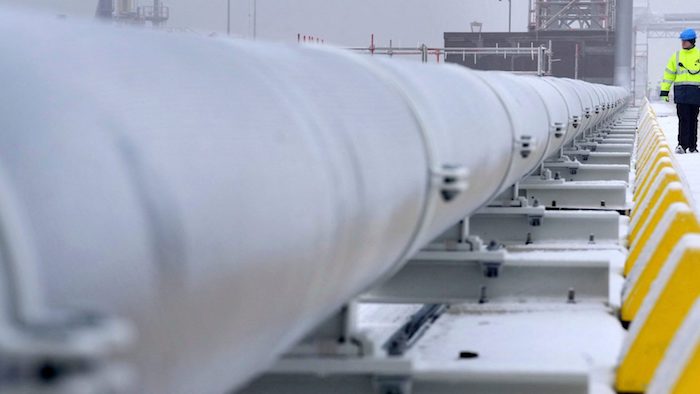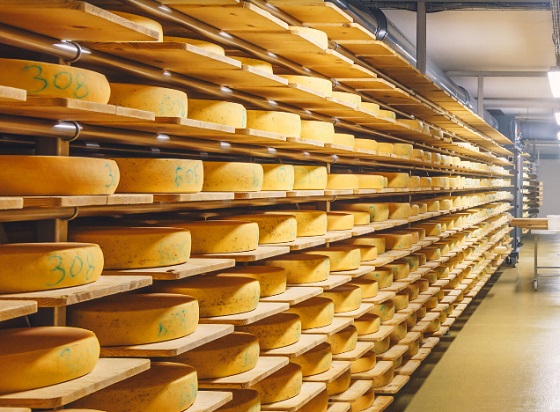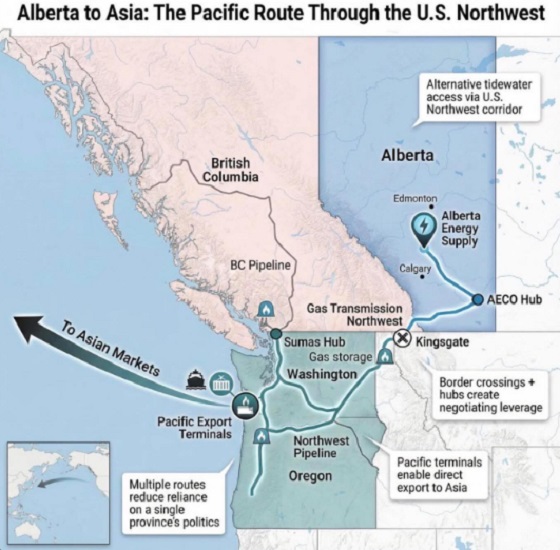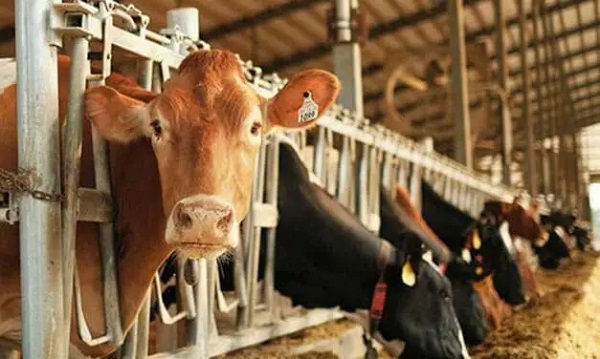Alberta
2022 – the year fossil fuels once again became a preferred source of reliable, affordable energy

A worker walks past gas pipes at Uniper’s new LNG import terminal in Wilhelmshaven, northern Germany on December 17, 2022. Getty Images photo
From the Canadian Energy Centre Ltd.
By David Yager
David Yager is an oilfield service executive, oil and gas writer, and energy policy analyst. He is author of From Miracle to Menace – Alberta, A Carbon Story.
The only part of the demise of oil and gas that was successful was reduced supply
It seems like just the other day the wrath of the world was coming down on oil sands and coal.
To protect the atmosphere, Canada has been reducing coal-fired power generation for years. It started in Ontario then moved to Alberta. Saskatchewan is next. New Brunswick is supposed to stop by 2030, but that province claims it can’t be done.
Global coal consumption is rising again because it meets the cost and availability requirement created by energy shortages and rising prices. On December 16, the International Energy Agency reported, “The world’s coal consumption is set to reach a new high in 2022 as the energy crisis shakes markets.”
For energy, the biggest single change in 2022 is the remarkable shift in public attitudes towards fossil fuels.
The global energy complex is under assault by Russia’s invasion of Ukraine, the exposed shortcomings of wind and solar, years of underinvestment in fossil fuels, and rising inflation and interest rates.
But for the past ten years, there has been an all-out crusade against fossil fuels. Oil company CEOs were branded climate criminals. It was morally reprehensible to own fossil fuel company shares or loan money to oil, gas or coal producers. Elections were won in Canada, the US and in Europe on pledges to replace fossil fuels.
No cost was too great, because the cost of doing nothing thus permitting unchecked climate damage was greater.
What happened? How did the channel change to rapidly? Why after years of public and political attacks on the source of over 80 per cent of the world primary energy, has affordable energy on demand now become more important than where it comes from?
Price, the most fundamental driver of economics and human behavior.
The November 2022 global survey from public opinion research firm IPSOS titled “What Worries The World” tells the story.
IPSOS explains, “This 29-country Global Advisor survey was conducted…among 20,466 adults aged 18-74 in Canada, Israel, Malaysia, South Africa, Turkey and the United States, 20-74 in Indonesia and Thailand, and 16-74 in all 21 other countries.”

IPSOS charts the top six issues for the past two years. Poverty, crime, unemployment and corruption have always been important, and consistently ranked among the top five.
But in November 2020, inflation only registered among eight per cent of respondents. Two years later it is 42 per cent. Coronavirus and the unemployment that accompanied the lockdowns were the top two issues. The others remain in a consistent range.
Two years ago was the peak of the “oil is dead” mantra, and when many bright ideas for a fossil fuel free future were concocted. In a post-pandemic world, multiple voices claimed we must Build Back Better, ensure a Resilient Recovery, engineer the Great Reset.
The plan was to use government policy and borrowed money to create jobs through the large-scale replacement of fossil fuels.
Coined the “energy transition,” it was achievable and inevitable thanks to incredible advances in renewable energy cost and supply. Canada – the world’s fifth largest combined oil and gas producer – could lead the charge with minimal disruption thanks to a new federally-funded retraining program for displaced oil workers. This was called a Just Transition.
What happened?
The invisible hand of Adam Smith punched the world in the nose.
The only part of the demise of fossil fuels that was successful was reduced supply. As the economy recovered, consumers learned the hard way that low carbon energy sources were terribly oversold in terms of reliability, and demand for fossil fuels outstripped supply.
Prices for fossil fuels rose at the same time that inflation and interest rates reduced disposal income.
As demand grew, fossil fuel shortages were reflected in the price. When Russia – one of the world’s largest oil, gas and coal suppliers – invaded Ukraine, the gravity of the situation escalated immediately.
What the IPSOS survey dramatically illustrates is the number one concern for the world as 2022 ends is the rising cost of everything.
We’ve been told repeatedly that continued fossil fuel consumption will cause serious climate disruptions. No expense today will exceed the cost of future damages.
However, the more pressing issue today is still being alive in 2050 because of the rising cost of everything, including energy. Worrying about what the temperature, storm intensity or chemical composition of the atmosphere may be in 28 years has become an unaffordable luxury.
So fossil fuels are once again what they have always been – reliable and affordable sources of energy.
Happy New Year.
Alberta
A Christmas wish list for health-care reform

From the Fraser Institute
By Nadeem Esmail and Mackenzie Moir
It’s an exciting time in Canadian health-care policy. But even the slew of new reforms in Alberta only go part of the way to using all the policy tools employed by high performing universal health-care systems.
For 2026, for the sake of Canadian patients, let’s hope Alberta stays the path on changes to how hospitals are paid and allowing some private purchases of health care, and that other provinces start to catch up.
While Alberta’s new reforms were welcome news this year, it’s clear Canada’s health-care system continued to struggle. Canadians were reminded by our annual comparison of health care systems that they pay for one of the developed world’s most expensive universal health-care systems, yet have some of the fewest physicians and hospital beds, while waiting in some of the longest queues.
And speaking of queues, wait times across Canada for non-emergency care reached the second-highest level ever measured at 28.6 weeks from general practitioner referral to actual treatment. That’s more than triple the wait of the early 1990s despite decades of government promises and spending commitments. Other work found that at least 23,746 patients died while waiting for care, and nearly 1.3 million Canadians left our overcrowded emergency rooms without being treated.
At least one province has shown a genuine willingness to do something about these problems.
The Smith government in Alberta announced early in the year that it would move towards paying hospitals per-patient treated as opposed to a fixed annual budget, a policy approach that Quebec has been working on for years. Albertans will also soon be able purchase, at least in a limited way, some diagnostic and surgical services for themselves, which is again already possible in Quebec. Alberta has also gone a step further by allowing physicians to work in both public and private settings.
While controversial in Canada, these approaches simply mirror what is being done in all of the developed world’s top-performing universal health-care systems. Australia, the Netherlands, Germany and Switzerland all pay their hospitals per patient treated, and allow patients the opportunity to purchase care privately if they wish. They all also have better and faster universally accessible health care than Canada’s provinces provide, while spending a little more (Switzerland) or less (Australia, Germany, the Netherlands) than we do.
While these reforms are clearly a step in the right direction, there’s more to be done.
Even if we include Alberta’s reforms, these countries still do some very important things differently.
Critically, all of these countries expect patients to pay a small amount for their universally accessible services. The reasoning is straightforward: we all spend our own money more carefully than we spend someone else’s, and patients will make more informed decisions about when and where it’s best to access the health-care system when they have to pay a little out of pocket.
The evidence around this policy is clear—with appropriate safeguards to protect the very ill and exemptions for lower-income and other vulnerable populations, the demand for outpatient healthcare services falls, reducing delays and freeing up resources for others.
Charging patients even small amounts for care would of course violate the Canada Health Act, but it would also emulate the approach of 100 per cent of the developed world’s top-performing health-care systems. In this case, violating outdated federal policy means better universal health care for Canadians.
These top-performing countries also see the private sector and innovative entrepreneurs as partners in delivering universal health care. A relationship that is far different from the limited individual contracts some provinces have with private clinics and surgical centres to provide care in Canada. In these other countries, even full-service hospitals are operated by private providers. Importantly, partnering with innovative private providers, even hospitals, to deliver universal health care does not violate the Canada Health Act.
So, while Alberta has made strides this past year moving towards the well-established higher performance policy approach followed elsewhere, the Smith government remains at least a couple steps short of truly adopting a more Australian or European approach for health care. And other provinces have yet to even get to where Alberta will soon be.
Let’s hope in 2026 that Alberta keeps moving towards a truly world class universal health-care experience for patients, and that the other provinces catch up.
Alberta
Calgary’s new city council votes to ban foreign flags at government buildings

From LifeSiteNews
It is not yet clear if the flag motion applies to other flags, such as LGBT ones.
Western Canada’s largest city has put in place what amounts to a ban on politically charged flags from flying at city-owned buildings.
“Calgary’s Flag Policy means any country recognized by Canada may have their flag flown at City Hall on their national day,” said Calgary’s new mayor Jeromy Farkas on X last month.
“But national flag-raisings are now creating division. Next week, we’ll move to end national flag-raisings at City Hall to keep this a safe, welcoming space for all.”
The motion to ban foreign flags from flying at government buildings was introduced on December 15 by Calgary councilor Dan McLean and passed by a vote of 8 to 7. He had said the previous policy to allow non-Canadian flags to fly, under former woke mayor Jyoti Gondek, was “source of division within our community.”
“In recent months, this practice has been in use in ways that I’ve seen have inflamed tensions, including instances where flag raisings have been associated with anti-Semitic behavior and messaging,” McLean said during a recent council meeting.
The ban on flag raising came after the Palestinian flag was allowed to be raised at City Hall for the first time.
Farkas, shortly after being elected mayor in the fall of 2025, had promised that he wanted a new flag policy introduced in the city.
It is not yet clear if the flag motion applies to other flags, such as LGBT ones.
Despite Farkas putting forth the motion, as reported by LifeSiteNews he is very much in the pro-LGBT camp. However, he has promised to focus only on non-ideological issues during his term.
McLean urged that City Hall must be a place of “neutrality, unity, and respect” for everyone.
“When City Hall becomes a venue for geopolitical expressions, it places the city in the middle of conflicts that are well beyond our municipal mandates,” he said.
As reported by LifeSiteNews, other jurisdictions in Canada are considering banning non-Canadian flags from flying over public buildings.
Recently a political party in British Columbia, OneBC, introduced legislation to ban non-domestic government flags at public buildings in British Columbia.
Across Canada there has also been an ongoing issue with so-called “Pride” flags being raised at schools and city buildings.
-

 Uncategorized2 days ago
Uncategorized2 days agoMortgaging Canada’s energy future — the hidden costs of the Carney-Smith pipeline deal
-

 Automotive2 days ago
Automotive2 days agoCanada’s EV gamble is starting to backfire
-

 Agriculture1 day ago
Agriculture1 day agoEnd Supply Management—For the Sake of Canadian Consumers
-

 Alberta1 day ago
Alberta1 day agoAlberta Next Panel calls to reform how Canada works
-

 International6 hours ago
International6 hours agoGeorgia county admits illegally certifying 315k ballots in 2020 presidential election
-

 Agriculture11 hours ago
Agriculture11 hours agoThe Climate Argument Against Livestock Doesn’t Add Up
-

 Alberta9 hours ago
Alberta9 hours agoWhat are the odds of a pipeline through the American Pacific Northwest
-

 International6 hours ago
International6 hours agoCommunist China arrests hundreds of Christians just days before Christmas









